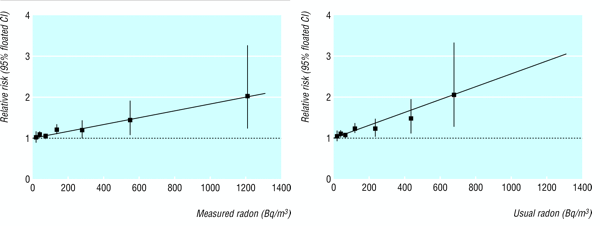Health Effects of Radon
Radon in the open air does not pose health risks; however, at high doses, it is known to increase the risk of lung cancer. During radioactive decay, Radon breaks down into smaller particles called progeny: Polonium 218 and Polonium 214, which also rapidly decay rapidly. Both maybe breathed into lungs where they breakdown further to form alpha particles. These alpha particles release energy which is then absorbed by the lungs. The energy causes cell death or damage. If damage occurs, cancer may develop if the cell reproduces. Cancer is thought to require one mutation, and proliferation of the cells that have DNA damage can increase the amount of cells which may develop into cancer. Since the alpha particles emitted from Radon can cause damage to the cells, it is possible that the DNA damage caused by
Radon can occur at any level of exposure indicating that there is no threshold dose of Radon before which it is safe.
See Figure 1. According to "Who Handbook On Indoor Radon: A Public Health Perspective", 3 to 14% of lung cancers worldwide are caused by Radon. It is the second most common cause of lung cancer after smoking. Radon-related cancer is more likely to occur in people who have smoked in their past, but is still the most common cause of lung cancer in non-smokers. See Figure 2.
Figure 1. Risk versus exposure for Radon gas. Darby S, Hill D, Auvinen A, Barros-Dios JM, Baysson H, Bochicchio F, et al. Radon in homes and risk of lung cancer: collaborative analysis of individual data from 13 European case-control studies. BMJ 2005;